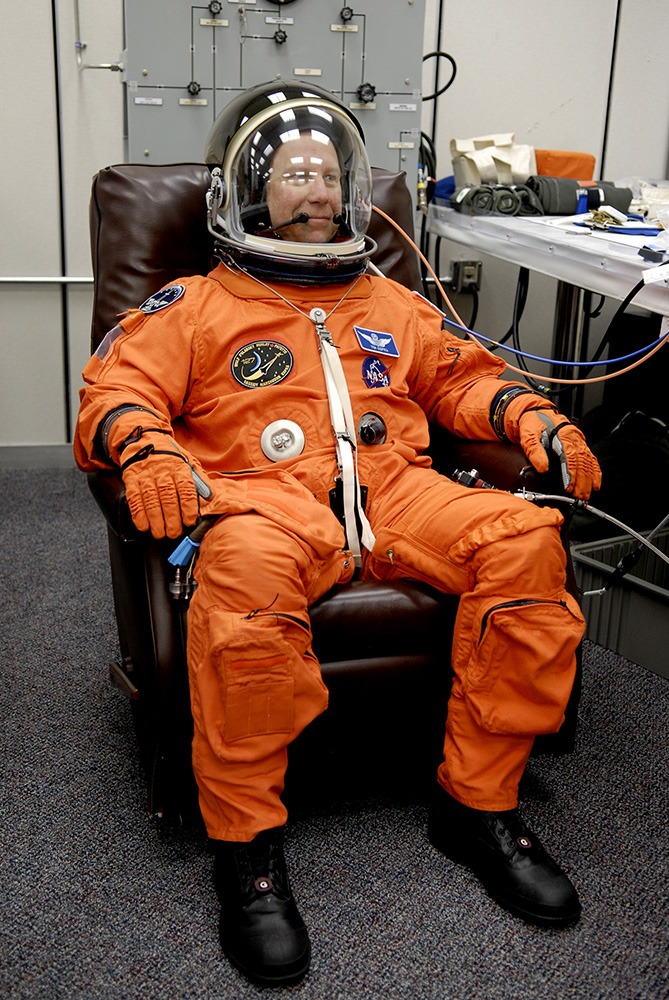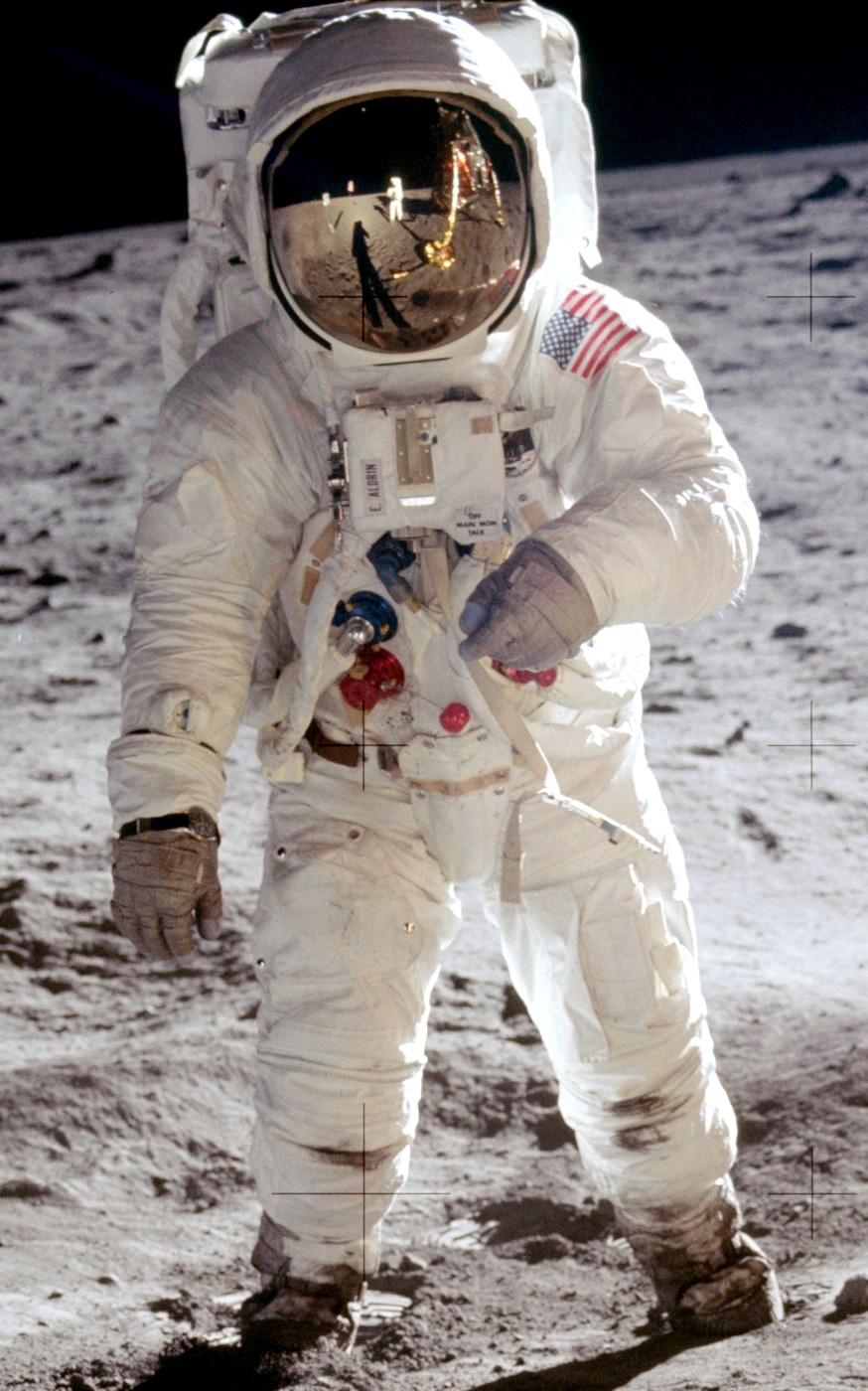For people wanting to be astronauts, the space suit is the dream suit. To wear a legitimate one is a high honor – it represents being one of the very few people on Earth worthy of going to space. If you’re fascinated with it, perhaps you have been curious about this suit. Learn about the interesting evolution of the space suit here.
What is a Space Suit?
Space is a fascinating place, but it’s wildly inaccessible and deadly for any human to go to without a great spacesuit. Astronauts wear a spacesuit to keep themselves alive in the harsh environment of outer space and extreme temperatures. It’s worn inside a spacecraft as a safety precaution in case of loss of cabin pressure, and it’s also necessary for work done outside the spacecraft.
Spacesuits are work for working in the Earth orbit, on the surface of the moon, and on the route back to Earth from the moon. Today, space suits are used on the International Space Station.
Mercury Suit
NASA’s first flight to space was during the Project Mercury, initiated in 1958 and completed in 1963. It was the United States’ first man-in-space program. The objectives of this program were to investigate man’s ability to function in space, to orbit a manned spacecraft around Earth, and to recover both man and spacecraft safely. During this mission launched in May 1961, Alan Shepard became the first American in space.
To protect astronauts from a sudden loss of pressure, NASA modified a suit based on the pressure suits used by the US Navy for squadrons in colder areas of the US. The Mercury Suit, also called as the Navy Mark IV, was a high-altitude, jet-aircraft pressure suit that has layers of neoprene-coated nylon on the inside, and aluminized nylon on the outside. It featured torsos that are personally tailored to each of the seven astronauts on the mission.
Unfortunately, mobility became a major issue, and when the suit was pressurized, the astronauts were essentially immobilized. It was only to be worn inside the spacecraft. After it was used to fly in space, the suit was retired from service by NASA.
SKSuit
The SK suit stands for SkafandrKosmicheskiy, which means spacesuit. It’s designed specifically for Yuri Gagarin for the Vostok program from 1961 to 1963 by the Soviet Union. This mission helped launch the first man to space on the Russian spacecraft Vostok 1. This space suit allowed for ejections of up to 8 kilometers, and it weighed 44 pounds. Gagarin wore the SK-1, while more suits of the SK series were used for later Vostok missions.
Berkut Suit
The Vokshod 2 mission from Russia used the Berkut suit in the 1960s. Berkut, which means “golden eagle,” was a modified SK-1 suit with life support and enough oxygen that lasted 45 minutes. It was used by the crew that included Alexei Leonov on the first spacewalk in 1965. The suit weighed 91 pounds, including the metal backpack, making it cumbersome and inflexible to wear.
Gemini Suit
NASA developed several suits for its Gemini space program that lasted from 1965 to 1966. The project was the first American mission in which an astronaut would walk outside the spacecraft. The Gemini suits were designed with space walking in mind. The Gemini capsule carried a two-astronaut crew in space, which gave its name Gemini – gotten for the third constellation of the Zodiac plus its twin stars, Castor and Pollux. This mission involved 12 flights, including two unmanned flight tests of the equipment. It had more ambitious goals than the Mercury space mission.
The Gemini suits were designed to be flexible when pressurized, and the designer, David Clark Company, took additional steps to make it more comfortable than the Mercury suits. Astronauts were able to wear it outside the safety of the space craft to work in the vacuum of space. The suit connects to a hose and then to a portable air conditioner to keep the astronauts cool and able to breathe oxygen. The suits weighed 16 to 34 pounds. One type of Gemini suit, called G4C, used insulation made of Mylar, a type of polyester film, to control the temperature.
Apollo Suit
The Apollo program is probably the most important space mission from NASA because it was the program that brought astronauts walking in the moon. The program spanned five years, from 1967 to 1972, and included 12 crewed flights.
The suit for Apollo missions required astronauts to leave their spacecraft, walk around the moon’s surface, and take samples. It needed more protection than the Gemini or Mercury suits. The first people to walk on the moon needed a shield against fine regolith. They must be protected from wild temperature swings, and the suit must be flexible enough to install the gear and get some moon rocks. It’s made of dozen layers of fabric and thick boots, as well as a stable and strong light support system. The suit weighed more than 180 pounds on our planet, but it’s about one-sixth as much lighter in the moon’s weaker gravity field. The 20-layer A7L lunar suit was a giant leap forward, but it did not allow much mobility.
Space Shuttle Flight Suit
The STS-1 mission, which was short for Space Transportation System 1, was the first orbital spaceflight of the space shuttle program of NASA. It was first launched in 1981. To date, the Space Shuttle mission has launched more than 70 missions with a variety of focuses.
The suit used in STS-1 was a modified version of the suits worn by the Air Force high fliers. It was exclusively used for launch and landing, and it included a helmet, life raft, parachute pack, and life preserver unit. The astronauts weren’t venturing outside, so they wore this emergency ejection escape suit. It allowed for ejections up to 24.4 kilometers.
Extravehicular Mobility Unit
During the space-shuttle era since 1983, the astronauts would regularly work in space to maintain satellites, including construction and maintenance of the International Space Station (ISS). The astronauts needed a workhorse spacewalk suit for these tasks, so NASA created this kind of suit. The Extravehicular Mobility Unit is a 14-layer pressurized suit that can withstand the harsh void of space and keep them alive for more than eight hours. It also comes with a jetpack-like device that enabled the astronauts to fly around freely and untethered.
Sokol Launch and Entry Suits
The blue-lined, sharp spacesuit worn by many astronauts today is a Russian suit called the Sokol or “Falcon” spacesuit. It was the first suit used in the Russian Sokol series, which was first used in the Soyuz 12 that launched in September 1973.
The 22-pound suit is a rescue unit used to protect people who fly inside the Soyuz spacecraft, and not for extravehicular activity. It’s designed to keep the astronaut alive in case of accidental depressurization of the spacecraft. The later version, the Sokol-KV2 suit, is still in use and comes with a more streamlined design.
Launch Entry Suit
The Launch Entry suit, which was used from NASA’s STS-26 mission in 1988 to the STS-88 in 1998, was worn by astronauts on the first fight after the Challenger disaster. This suit is also called a “pumpkin suit” for its bright orange color. It is a partial pressure suit derived from a USAF model, complete with a full-pressure helmet, safety boots, zippered gloves, and a survival backpack.
Advanced Crew Escape Suit
The full-pressure Advanced Crew Escape Suit is a full-pressure suit worn by all Space Shuttle crews starting in 1994 for ascent and entry portions of the flight. It was a direct descendant of the US Air Force high altitude pressure suits, coming with improved ventilation and an extra layer of insulation.

